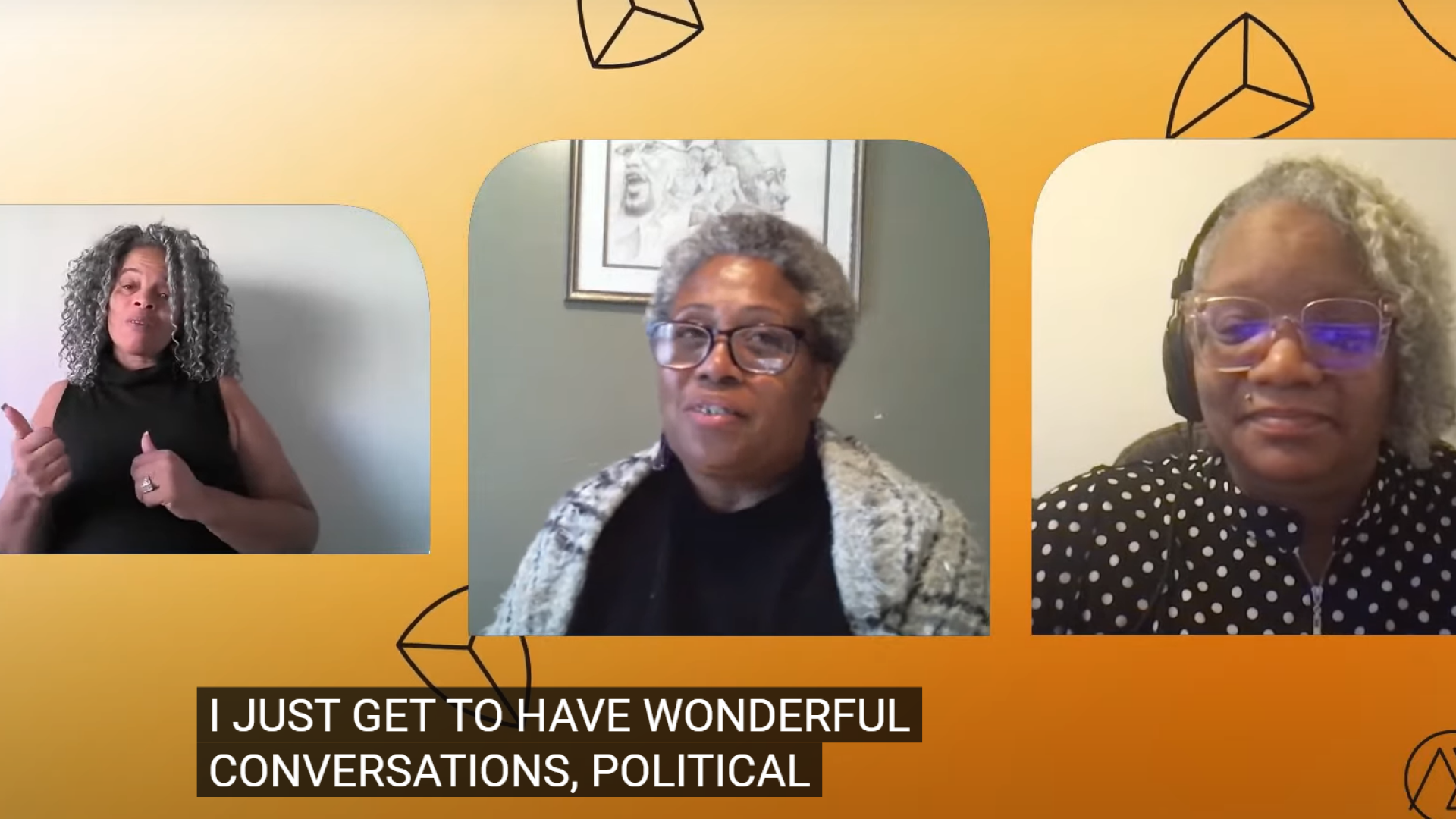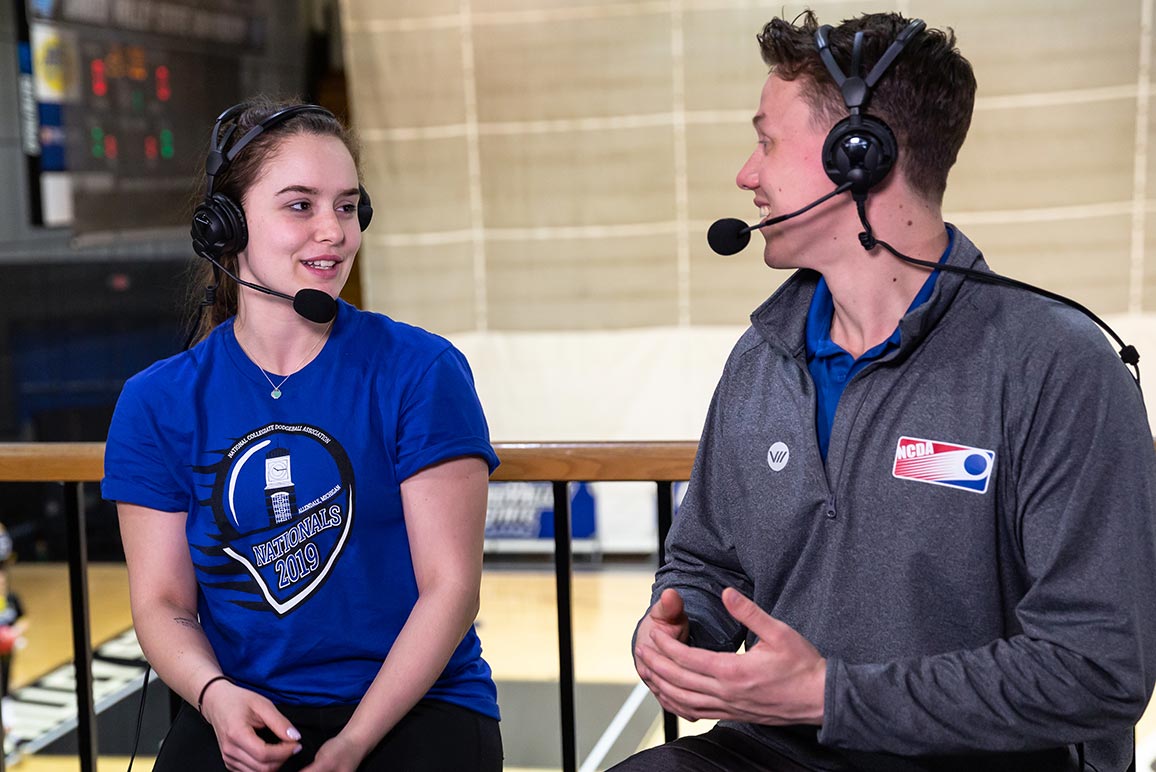With more than 61 million adults in the United States living with a disability, the media landscape has evolved to offer services that provide accommodations and alternatives for those in need. Thanks to the Americans with Disabilities Act (ADA), we have options like closed captioning for the deaf and hard of hearing and audio recordings of printed information for the blind and visually impaired. And while we have been able to attain such services on our televisions and in our movie theaters, museums and workplace, we are only now beginning to integrate them in live streaming and virtual conferencing.
The ADA was signed into federal law in 1990, offering accommodations and protections for an array of individuals in need. Some of these items, equipment or services (also known as auxiliary aids) include, but aren’t limited to closed captioning, notetakers, onsite interpreters, and assistive listening devices.
While the ADA has gone through revisions over the last 30 years, the law’s language may sound dated. So, while one may not find the words “live streaming” in the fine print, producers should still aim to offer auxiliary aids to make their content as accessible and inclusive as possible.
Let’s break down some ADA requirements and how they can be incorporated into live streaming events.
ACCESSIBILITY FOR THE DEAF AND HARD OF HEARING
For members of the deaf and hard of hearing communities, the ADA outlines the following auxiliary aids and services:
- a qualified notetaker
- a qualified sign language interpreter, oral interpreter, cued-speech interpreter, or tactile interpreter
- real-time captioning
- printed script of a stock speech

screen shot of a virtual event with captions and an ASL interpreter
Closed captioning is a staple through our televisions and streaming services but generating them for live events is easier said than done. Many live events, like press conferences, often rely on a sign language interpreter to provide real-time translation. While that may seem like the obvious choice, there could be drawbacks. For example, a study from Ofcom revealed 80% of individuals who use closed captions aren’t deaf or hard of hearing.
Like a court stenographer, Communication Access Real-Time Translation (CART) is a service that allows a professional to caption audio for a live stream event in – as the name suggests – real time. CART service can be obtained through captioning vendors like Ai-Media and 3Play Media for a fraction of what it would cost to have an interpreter onsite. Short of CART, there are auto captioning functions that utilize technology rather than a person to provide real-time results, but mistakes in syntax and grammar can happen.
When Allied Media Projects reached out to Mainstream Media to produce Allied Media Conference 2020, accessibility was paramount a successful virtual event.
“We worked closely with our client to identify the needs of their constituents, but ultimately, we took our client’s lead,” said Beth Norber, account manager for Mainstream Chicago. “They blew us away with how thoughtfully they considered their audience.”
The virtual conference featured both ASL interpreters via picture-in-picture in the upper right-hand corner of the screen, as well as real-time closed captioning that could be turned on and featured in the bottom of the screen.
“We came up with a process of routing our ASL interpreters, Spanish interpreters and live captioners in through separate Zoom rooms that didn’t distract from the ‘live’ or ‘green’ rooms where our presenters were,” said Norber. “But in some instances, the interpreters were leading us as we went along, telling us what they needed – so it was a real collaboration that set up the blueprint for how we handle accessibility features for future events.”
But if a host is unable to provide those real-time services, would a transcript of the event afterward work? The Section 508 amendment to the Rehabilitation Act of 1973 (say that three times fast) incorporates Web Content Accessibility Guidelines (WCAG) from the Web Accessibility Initiative (WAI) of the World Wide Web Consortium that state captions are needed for live video with audio content, like dialogue.
A final rule stipulating these technical guidelines under the Americans with Disabilities Act has yet to be adopted, according to Section508.gov.
ACCESSIBILITY FOR THE BLIND AND VISUALLY IMPAIRED
There are approximately 12 million Americans over the age of 40 with blindness or visual impairment, according to the Centers for Disease Control and Prevention. There are also an estimated 93 million adults at high risk for serious vision loss. The auxiliary aids and services the ADA refer to for aiding these individuals include:
- information in large print, Braille, or electronically for use with a computer screen-reading program
- audio recordings of printed information
- a qualified reader, or someone who is able “to read effectively, accurately, and impartially, using any necessary specialized vocabulary.”
Making a live stream or real-time virtual event ADA accessible for the blind and visually impaired may sound difficult, but it can be as easy as being descriptive as possible when describing physical actions and visual characteristics, according to 3Play Media. Say if a brand is hosting a cooking demo live stream, the host(s) can go into detail by mentioning things like the colors, smells and sizes of the ingredients. They can also describe the cooking process, defining the way ingredients are being chopped or the kind of smells being emitted during the cooking process.

commentators can be trained to be more visually descriptive, allowing a visually impaired audience to participate
Sports broadcasting and play-by-play commentary are great examples of this. Back in 2019, Mainstream Media partnered with Mad City Media Group to produce the last day of the National Collegiate Dodgeball Association (NCDA) 2019 Nationals tournament. The tournament live stream, which was broadcast across YouTube, Twitch and Facebook, featured color and play-by-play commentary.
CONCLUSION
Technology will always evolve at a much faster pace than the law, but should producers and companies stay complacent and wait for the latter to catch up? They could, but only to their own detriment. A MediaAccess study shows that 71% of individuals with disabilities will leave a website if it isn’t accessible. Other studies cited by 3Play Media also reveal successful live stream video can help a business or brand generate product sales and new consumers.
The return on investment is there in terms of both sentiment and business. Adapting ADA guidelines could feel like a small inconvenience at first, but the effort will be recognized and appreciated in more ways than one.
Whether procuring sign language interpreters or CART services, Mainstream Media can help make your next virtual event or conference ADA compliant. Contact us today for more information!

I love that you talked about the importance of having a reliable virtual service for the event’s success. My cousin mentioned to me last night that his friend is looking for an audio solution for their business event and asked if I have any idea what is the best option to consider. Thanks to this informative article, I’ll be sure to tell her that it will be much better if we consult a trusted audio-video and lighting company as they can answer all their inquiries.